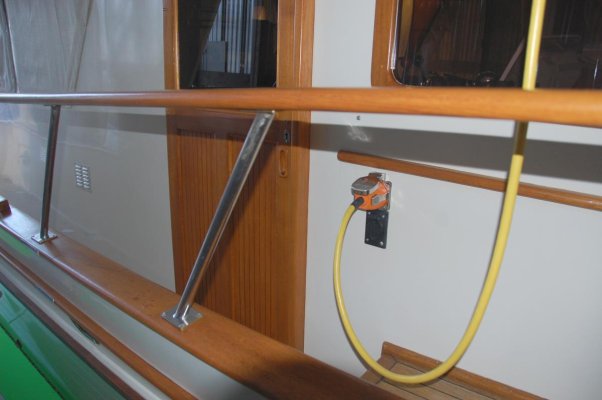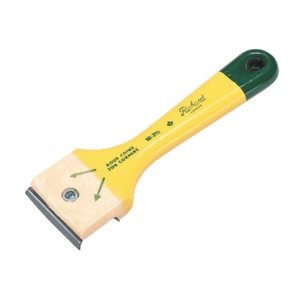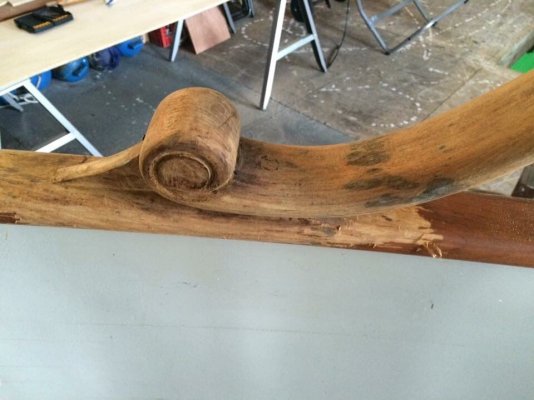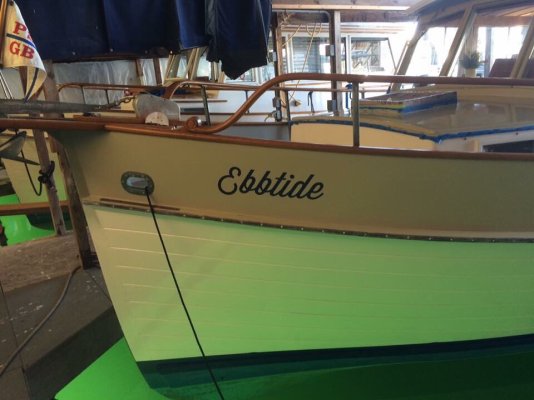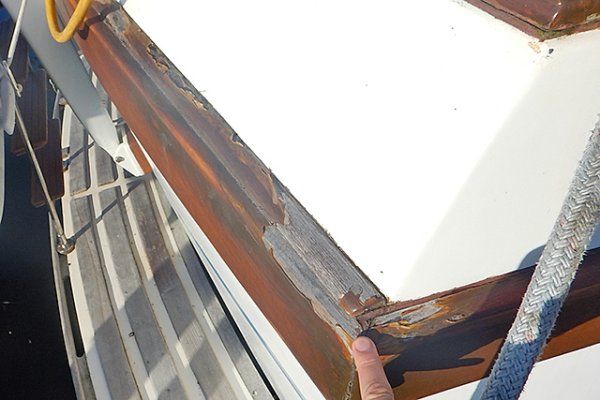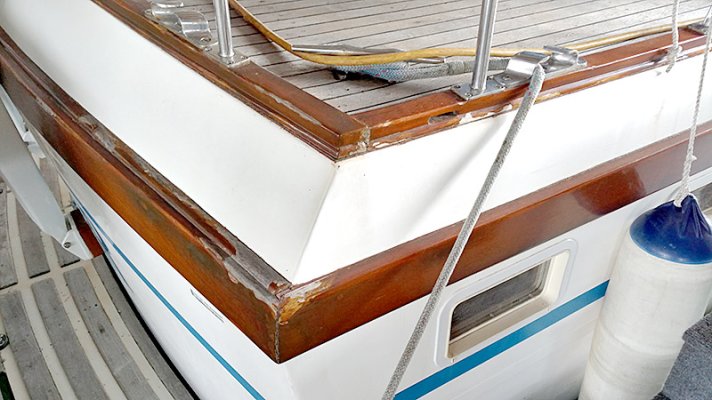Varnish has mostly failed on our Fu Hwa. A PO stripped about half the boat to bare Teak. A PO also painted the Teak window trim white and another stripped that just to peek, I suppose. Some of the Teak trim (up under the Euro-hat) was never varnished. Subject to further rumination, I plan to strip and let most of the Teak go grey. I plan to repaint the once-painted trim. I plan to strip and Cetol the two sliding doors and their trim.
Both varnishes and Cetol are susceptible to water creeping under the finish from under poorly-bedded items, failed sealant lines and failed glue joints, and away from poorly bedded edges. There really is no cure for for the resulting lousy appearance but rebedding, resealing, and constant refinishing. (That's why your finish failed along the fiberglass.)
As RTF said, you can gain a little time and stop a little continued color change and wood loss by knocking the loose stuff off, doing a little sanding, and slopping a little finish on. I think you'd be happier if you'd pick a section, preferably with natural end points and do it well. You can 'feather' layers of finish by sanding to hide the transition between new and pretty and the thick old stuff, but it will be obvious.
Teach yourself some tricks like cutting in/edging by hand. Taping takes time. The tape will occasionally peel up your new Cetol if you've been a little slapdash with the thickness overlapping the tape. Tape left on too long leaves a sticky mess that only shows later, when it's collected dirt. Keep your scraper sharp and continually sharpen it. A fine file is good enough. Don't sharpen your steel scraper over your boat, the metal chips will rust and stain your new work. I use the Allway FE1, 1" wide scraper; I've even added a long handle to one for easier control. The 1" width removes a satisfactory amount of varnish with a reasonable amount of force. I use a heat gun, but take great care to not heat the adjacent fiberglass, not always easy. Use a sander where ever possible. I have a Fein MultiMaster and use the plastic hook-n-loop backers (rather than the metal ones with the plastic face). They're expensive and the backers are readily ruined by sanding heat - expensive. Stick with the triangular pads and don't bother with the sharp-pointed ones, they are ruined almost instantly by heat. Fein is no longer exclusive for such tools, shop around.








